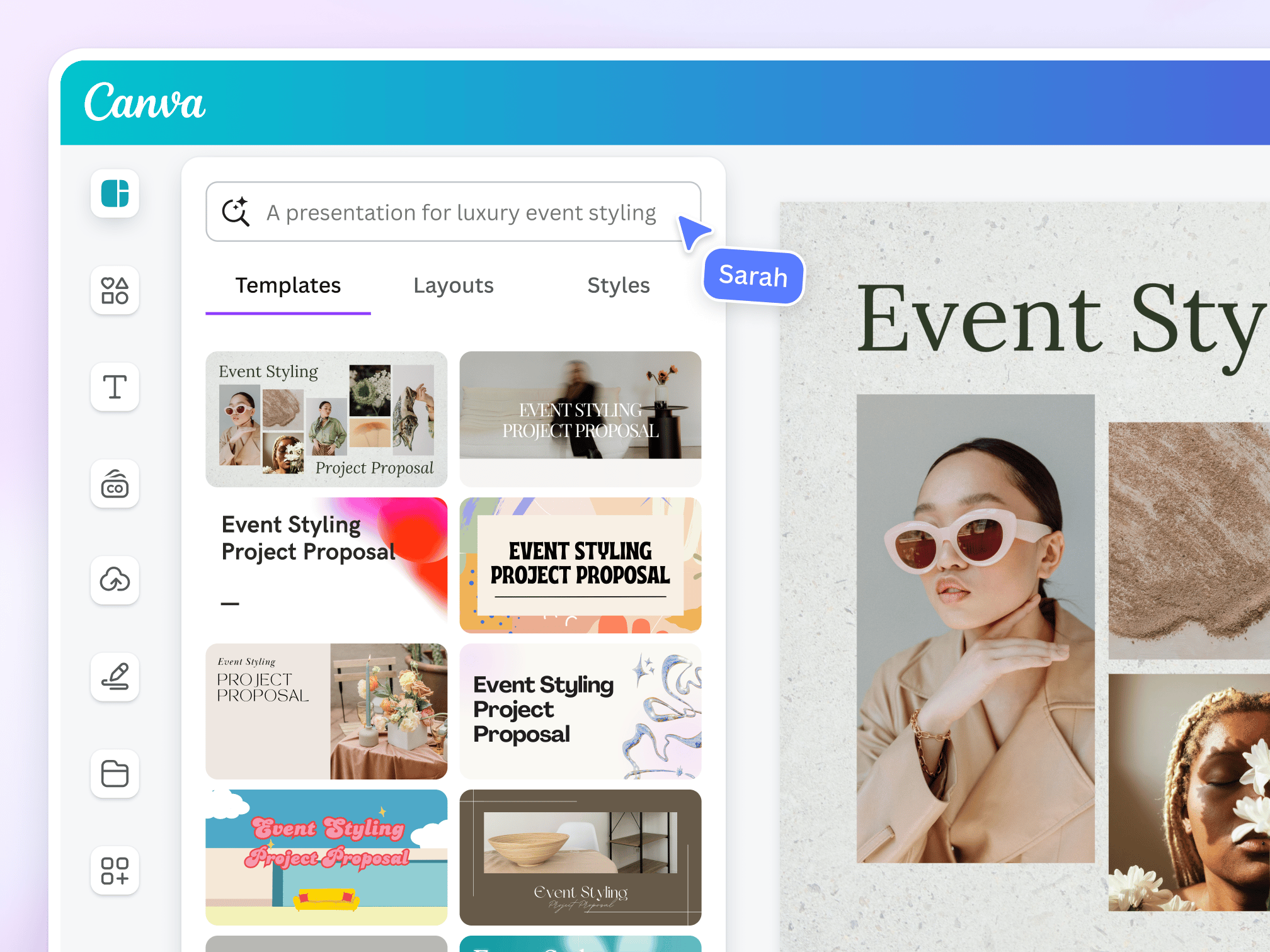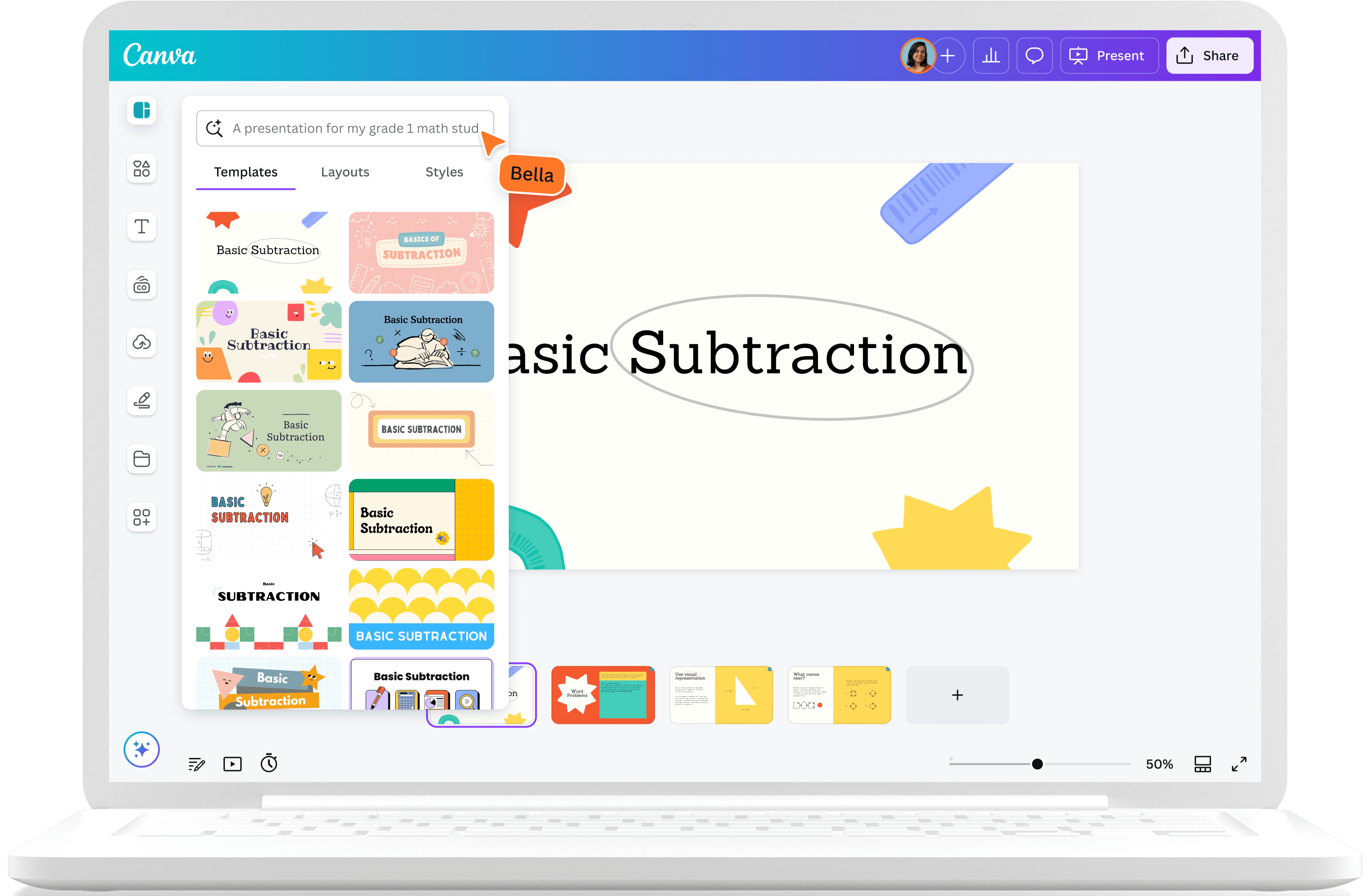
Canva Magic Design: Complete Buyer's Guide
AI-powered design generation tool within the broader Canva ecosystem
Canva Magic Design positions itself as an AI-powered design generation tool within the broader Canva ecosystem, targeting organizations seeking rapid content creation capabilities with collaborative workflow integration[44][48].
Market Position & Maturity
Market Standing
Canva Magic Design operates within the broader Canva ecosystem, leveraging the parent company's established market position in collaborative design tools.
Company Maturity
The platform's positioning emphasizes accessibility and workflow integration over advanced customization capabilities.
Growth Trajectory
Market traction across diverse organizational sizes, from small businesses to large enterprises, with applications spanning marketing collateral and internal communications[57].
Industry Recognition
Industry recognition through disruptor awards suggests market validation, though specific adoption numbers require independent verification[57].
Strategic Partnerships
Integration capabilities with established business tools including Slack, HubSpot, and Figma[46][62][63].
Longevity Assessment
Stable operational foundation through the broader Canva platform, though specific financial metrics and growth indicators for Magic Design as a distinct product require direct vendor verification.
Proof of Capabilities
Customer Evidence
Documented deployment patterns show 8-12 week implementation cycles for mid-market teams requiring 1-2 FTEs plus vendor support[63][72].
Market Validation
User adoption across diverse organizational sizes, from small businesses to large enterprises, with applications spanning marketing collateral and internal communications[57].
AI Technology
Magic Design operates through text prompt interpretation with a 100-character limitation, generating design layouts within Canva's collaborative environment[39][48][49][60].
Architecture
Integration architecture emphasizes connectivity with business tools including Slack, HubSpot, and Figma, providing workflow continuity advantages over standalone solutions[46][62][63].
Primary Competitors
Adobe Firefly offers more sophisticated customization options for organizations requiring advanced creative control[50][72].
Competitive Advantages
Superior collaborative workflow integration compared to specialized typography tools, offering real-time collaboration capabilities that exceed standalone solutions[48][53][66].
Market Positioning
The platform differentiates through workflow integration rather than generative depth[49][72], positioning for accessibility and speed over advanced customization.
Win/Loss Scenarios
Organizations should prioritize Magic Design when workflow integration and collaboration take precedence over advanced customization.
Key Features

Pros & Cons
Use Cases
Integrations
Pricing
Featured In Articles
Comprehensive analysis of AI Typography Tools for AI Design for AI Design professionals. Expert evaluation of features, pricing, and implementation.
How We Researched This Guide
About This Guide: This comprehensive analysis is based on extensive competitive intelligence and real-world implementation data from leading AI vendors. StayModern updates this guide quarterly to reflect market developments and vendor performance changes.
72+ verified sources per analysis including official documentation, customer reviews, analyst reports, and industry publications.
- • Vendor documentation & whitepapers
- • Customer testimonials & case studies
- • Third-party analyst assessments
- • Industry benchmarking reports
Standardized assessment framework across 8 key dimensions for objective comparison.
- • Technology capabilities & architecture
- • Market position & customer evidence
- • Implementation experience & support
- • Pricing value & competitive position
Research is refreshed every 90 days to capture market changes and new vendor capabilities.
- • New product releases & features
- • Market positioning changes
- • Customer feedback integration
- • Competitive landscape shifts
Every claim is source-linked with direct citations to original materials for verification.
- • Clickable citation links
- • Original source attribution
- • Date stamps for currency
- • Quality score validation
Analysis follows systematic research protocols with consistent evaluation frameworks.
- • Standardized assessment criteria
- • Multi-source verification process
- • Consistent evaluation methodology
- • Quality assurance protocols
Buyer-focused analysis with transparent methodology and factual accuracy commitment.
- • Objective comparative analysis
- • Transparent research methodology
- • Factual accuracy commitment
- • Continuous quality improvement
Quality Commitment: If you find any inaccuracies in our analysis on this page, please contact us at research@staymodern.ai. We're committed to maintaining the highest standards of research integrity and will investigate and correct any issues promptly.